Origin of state's name: Named
by the Spanish for lands north of the Rio Grande River
Capital City: Santa Fe
Song: O, Fair New Mexico
Motto: Crescit eundo - It grows as it goes
Poem: "A Nuevo Mexico" by Luis Tafoya |
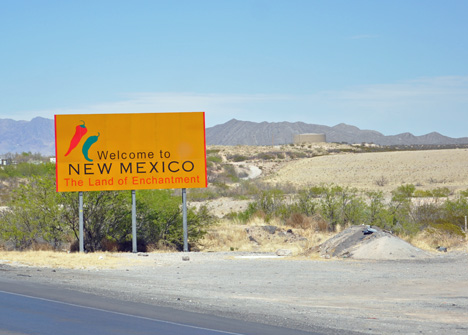 |
New Mexico State Flag
|
The yellow field and red symbol colors are the colors of Spain. First
brought to New Mexico by Spanish explorers in 1540. On New Mexico's flag
we see a red sun with rays stretching out from it. There are four groups
of rays with four rays in each group. This is an ancient sun symbol of
a Native American people called the Zia. The Zia believed that the giver
of all good gave them gifts in groups of four. These gifts are:
* The four directions - north, east, south and west.
* The four seasons - spring, summer, fall and winter.
* The day - sunrise, noon, evening and night.
* Life itself - childhood, youth, middle years and old age. All of these
are bound by a circle of life and love, without a beginning or end |
New Mexico State Flower: The yucca was adopted as the State Flower
on March 14, 1927. The yucca is a member of the lily family and a symbol
of sturdiness as well as beauty. In the early summer, pale ivory flowers
bloom at the tips of its long, fibrous stalks. At the base of the plant
are broad, sharp edged leaves that look like stilettos. The yucca sometimes
grows to the height of a small tree.
|
|
|
The origin of the city's name is unknown. In Spanish "Las Cruces"
means "the crosses". Crosses have a symbolic meaning for many
people in the area. The three crosses has been a symbol of the Las Cruces
area since before Mesilla's founding in 1848, and was recently challenged
in court. |
|
Bataan Memorial Monument
|
|
|
The Veterans Wall, located in the Las Cruces Veterans Park at 2651
Roadrunner Parkway, was dedicated on
November 11, 2005 to all who served their country honorably, regardless
of home of record or period of service. All veterans are represented
by 7,065 names of veterans who entered the armed services of the United
States from Doña Ana County and who served during a major conflict
from the Civil War through the Persian Gulf War.
|
| |
|
Lee Duquette and his friends, Jerry and Carole Gerig, who live in
Las Cruces and were kind enough to act as travel guides for the two RV
Gypsies. Jerry and Karen used to line dance together in Florida. |
Below: The Las Cruces Water Tank; The Conquistadors are
represented as one of the First travelers up the Rio Grande from Spain,
but the Native Americans were already here. |
|
|
| |
|
Lee Duquette and AWO -
the two RV Gypsies' new yard -
Sunny Acres RV Park in Las Cruces, New Mexico is a nice
RV park with friendly workers. It is also within walking distance of
a Mexican restaurant, dollar store and other stores.
|
Below: Beautifully painted bridges
|
|
|
Below: Beautiful scenery
|
|
|
Below: The beautiful Organ Mountains
are located east of Las Cruces, New Mexico. They were named by Spanish
explorers who felt that the jagged peaks looked like the pipes of a pipe
organ. |
|
|
|
|
Below: Plants and Cacti in
Jerry Gerig's yard |
|
|
|
|
|
|
Below: The style of many houses and yards in Las Cruces
|
|
|
|
|
Below: The Las Cruces' giant roadrunner sculpture celebrated
its fifth anniversary along I-10. But the only "Beep! Beep!"
the two RV Gypsies heard was from an occasional passing car. |
|
|
Below: Lee Duquette and the giant road runner. This
big bird is twenty (20) feet tall and forty (40) feet long, and is the
World's Largest roadrunner at this time. There is a link to the world's
second largest roadrunner at the bottom of this page.
|
|
|
Below: As shown below, the giant roadrunner is made with all kinds of stuff;
tennis shoes, old computer keyboards, bicycle tires, broken hair dryers,
plastic plates, paint brushes, and lots of trash. The body of the bird
is composed of wire fencing and sturdy material found at the city's sanitary
landfill, which was its original nesting area after its creation in 1992.
Much like the plight of its flesh-and-feathers counterpart, however, the
roadrunner's habitat, in fact its very life, was threatened by progress.
The city closed the landfill area on the east mesa to allow housing to
be developed. The big bird now sits off I-10 on the outskirts of Las Cruces.
|
|
|
ABOVE and BELOW: The stuff the big road runner is made
of
|
|
|
|
|
| |

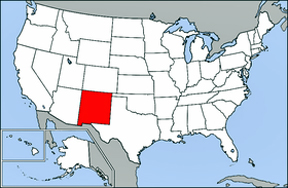



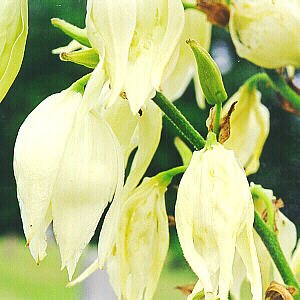
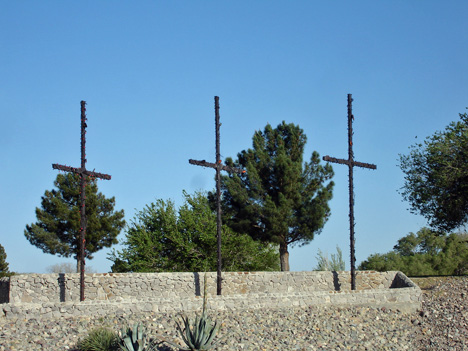
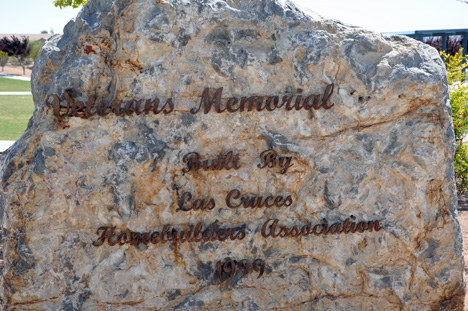
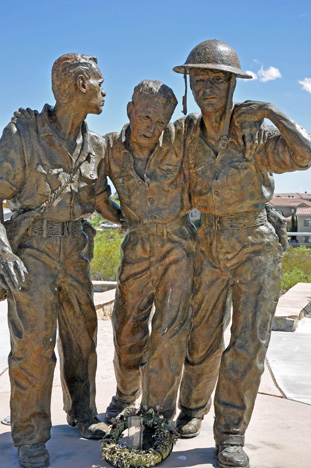
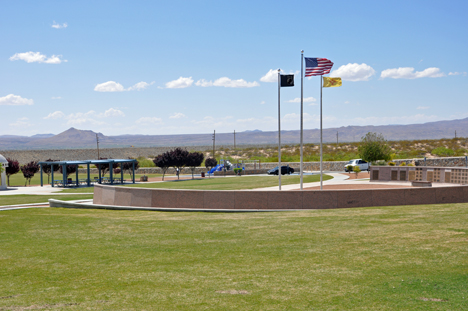
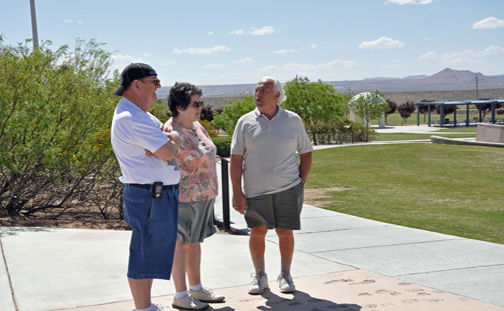
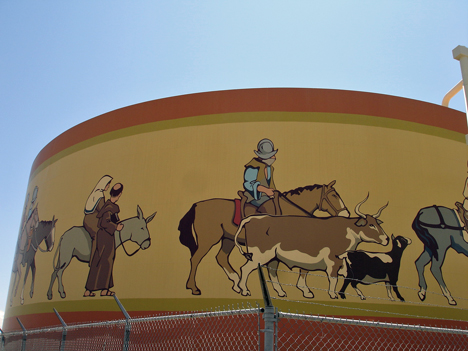
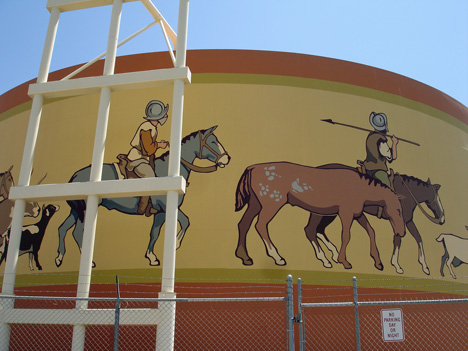
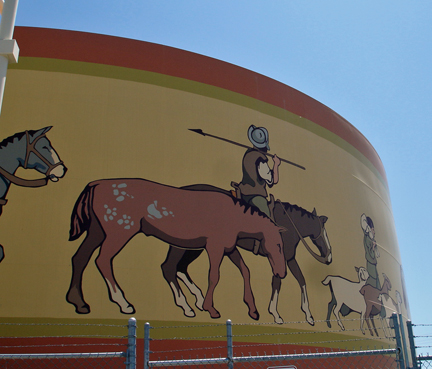
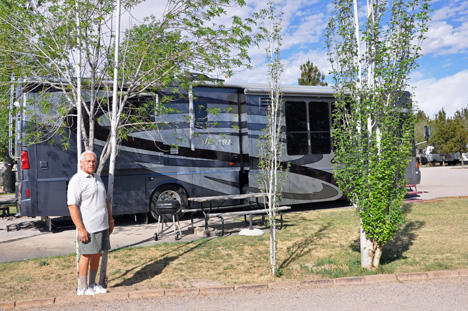
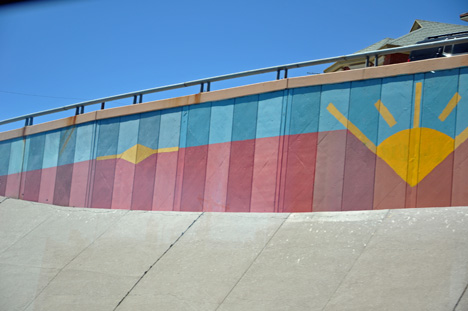
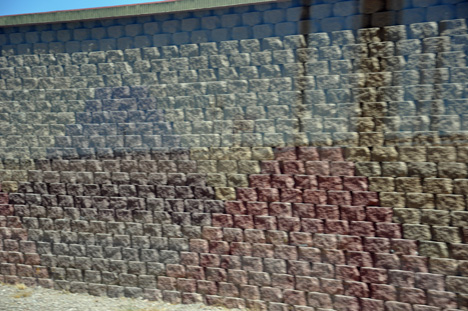
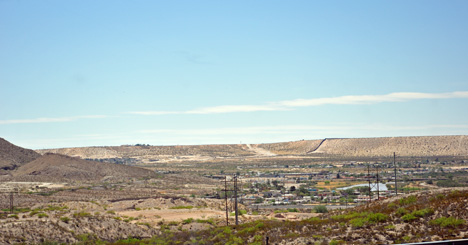
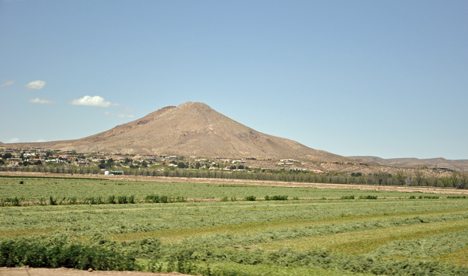
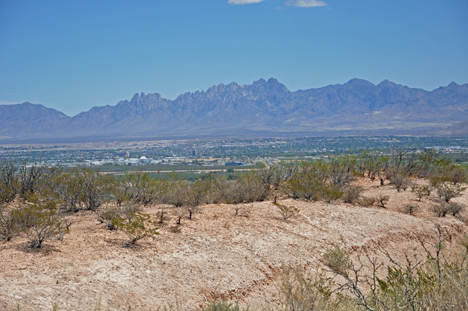
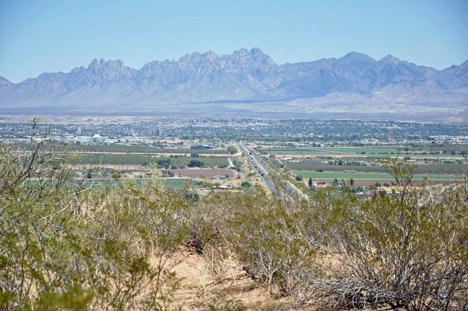
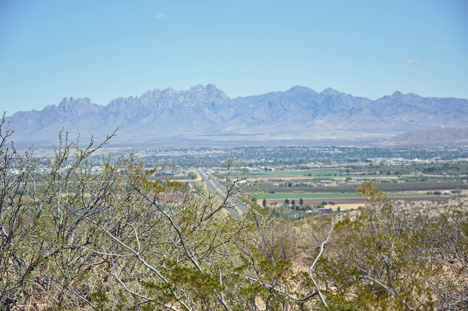

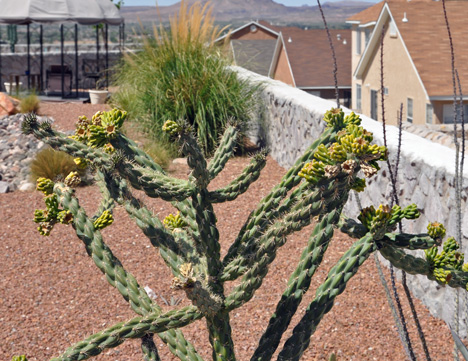
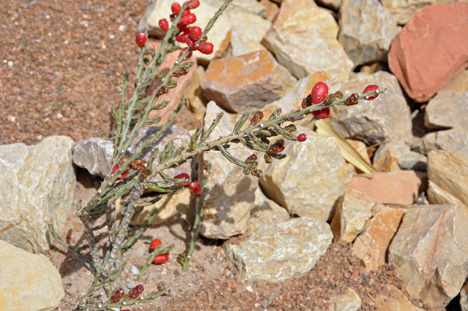
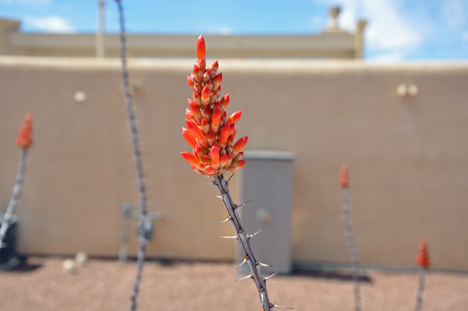
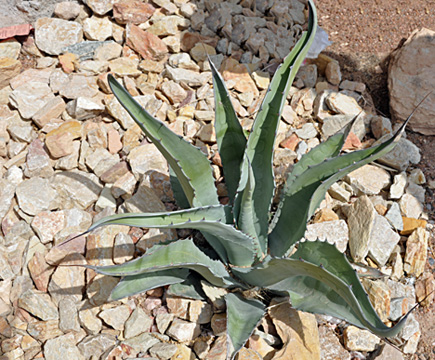
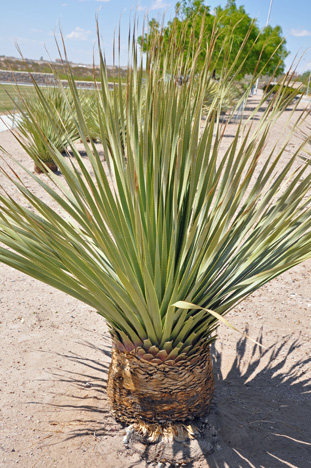
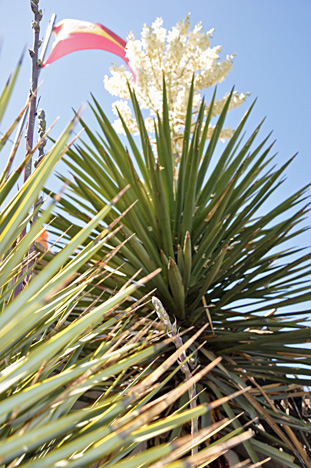
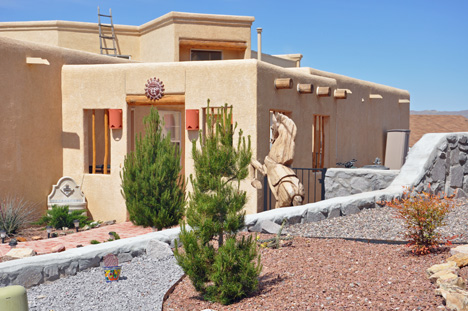
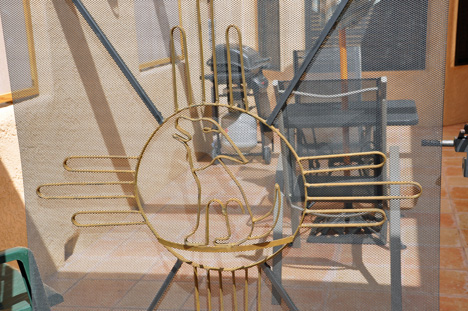
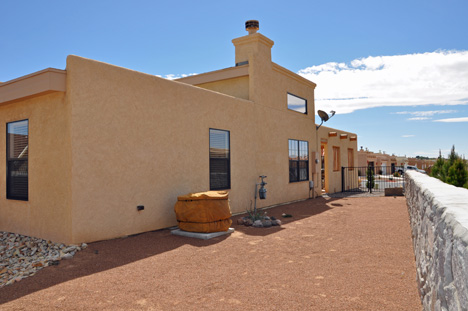
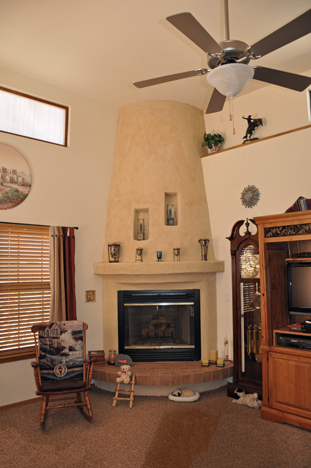
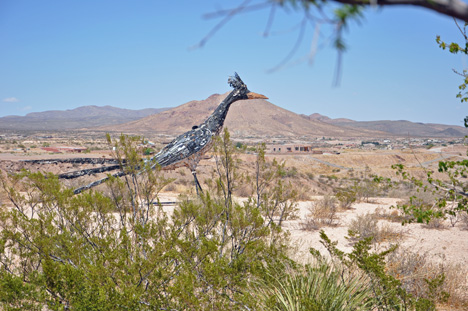
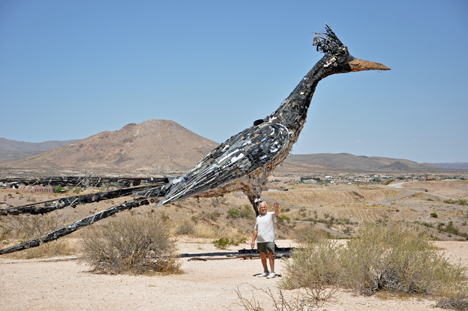
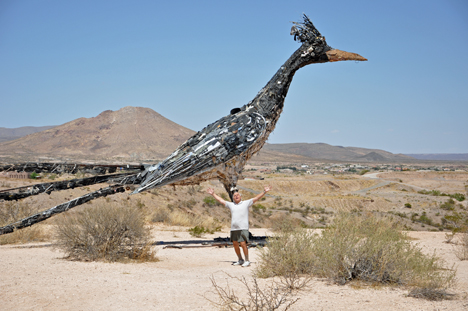
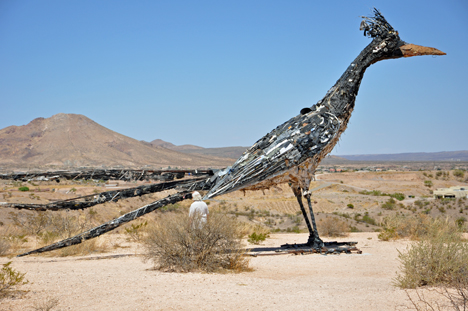
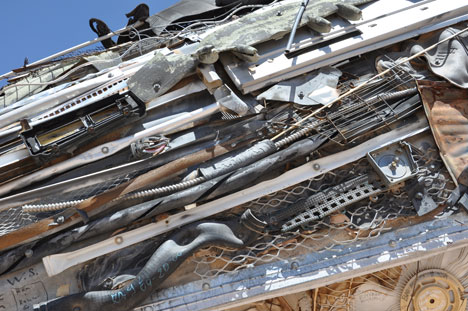
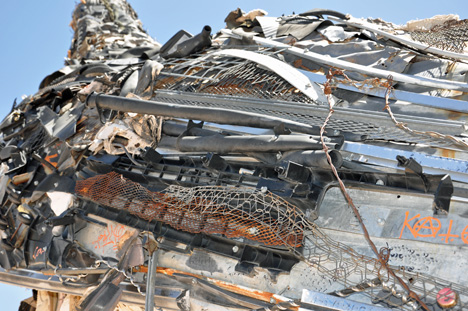
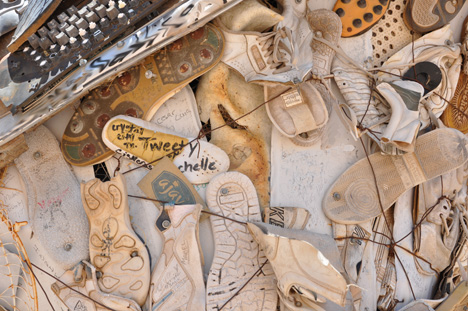
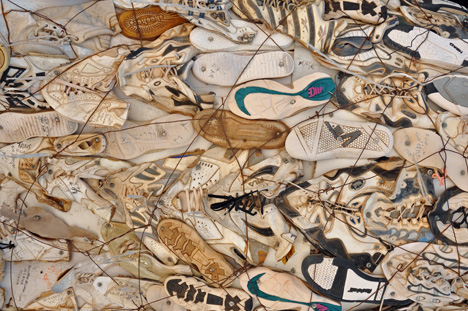
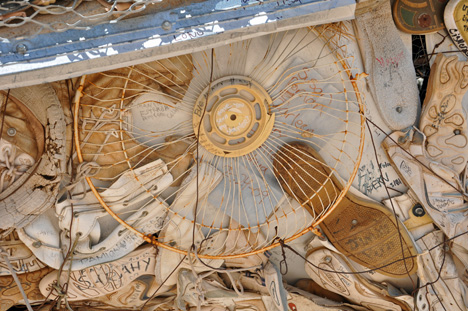
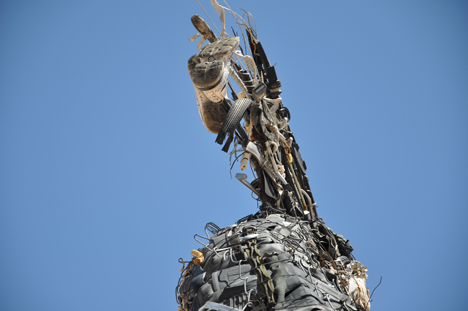


 AFTER
you have viewed all 4 of
the above photo sections, please continue on for
photos in Arizona.
AFTER
you have viewed all 4 of
the above photo sections, please continue on for
photos in Arizona. 























